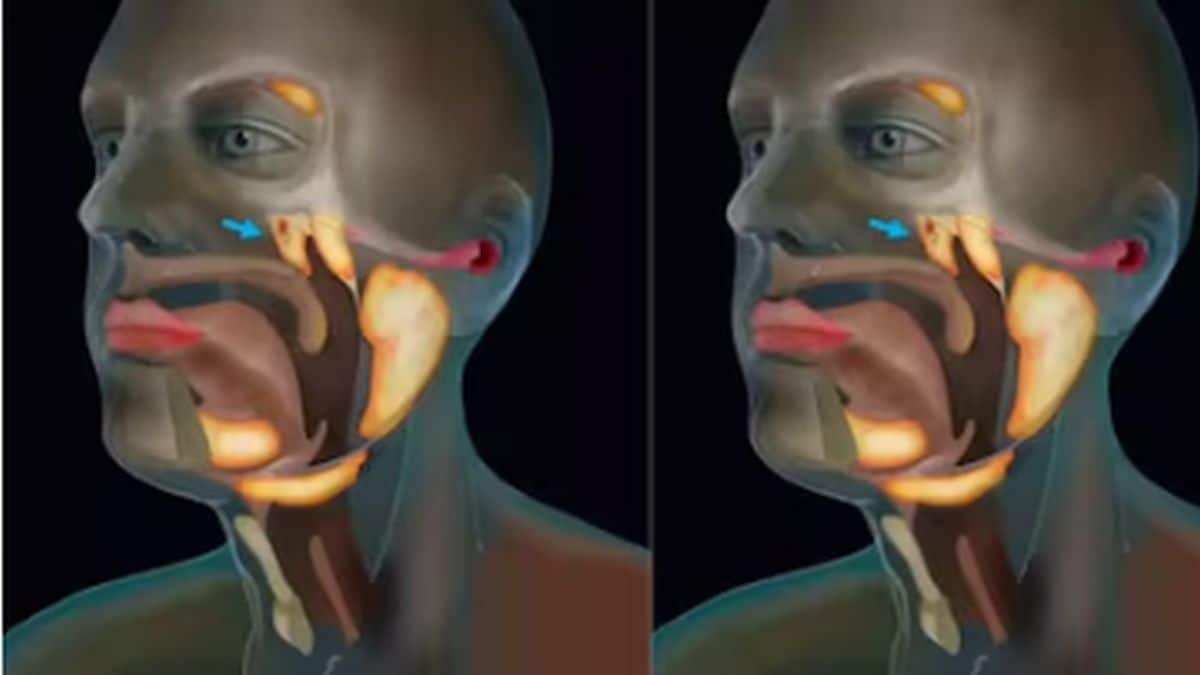Speculation ran wild this week after viral photos showed bruising on President Donald Trump’s hand and noticeably swollen ankles, sparking intense online chatter about his health.
Amid the growing buzz, the White House confirmed that the President has been diagnosed with a chronic vein condition known as chronic venous insufficiency (CVI).
In a media briefing on Thursday, White House Press Secretary Karoline Leavitt said the 79-year-old president was found to be suffering from CVI after a check-up revealed “mild swelling” in his ankles.
The images, taken during Trump’s appearance at the FIFA Club World Cup , showed his lower legs looking noticeably puffed up. Some viewers also pointed out what appeared to be concealer on the back of his hand, fuelling theories about a possible hidden health issue.
So, what exactly is CVI? How serious is it? And is President Trump fit to continue his duties? Here’s what we know.
What is chronic venous insufficiency (CVS)?
Chronic venous insufficiency is a condition where the veins in the legs have trouble pumping blood back to the heart.
As explained by the National Library of Medicine’s MedlinePlus, this happens when the valves in the leg veins become weak or damaged, causing blood to collect in the lower limbs instead of flowing upward as it should.
Swollen ankles at the World Cup
— Maine (@TheMaineWonk) July 15, 2025
Bruised hand at today’s press availability.
Is the Trump administration hiding the President’s health?
Where is @jaketapper? pic.twitter.com/SRo0bpJReK
According to the National Center for Biotechnology Information, CVI affects an estimated 10 per cent to 35 per cent of adults in the US, and the chances of developing it rise significantly after the age of 50.
The condition is especially common among older adults and those with certain risk factors, such as prolonged sitting or standing, obesity, or a family history of vein problems.
What are the symptoms of CVI?
Chronic venous insufficiency can cause a range of symptoms, many of which tend to worsen after long periods of standing or sitting.
According to the Cleveland Clinic, common signs of CVI include:
-Aching or cramping in the legs
-Heaviness or fatigue, particularly after standing for extended periods
-Swelling, especially around the ankles
-Itching or tingling sensations in the legs
-Visible skin changes, such as thickening, discolouration, or the development of varicose veins
In President Trump’s case, White House physician Sean Barbabella said he was “thoroughly evaluated by the White House medical unit, out of an abundance of caution” after swelling was noticed over recent weeks.
Alongside the leg swelling, Leavitt also addressed the bruising visible on the back of Trump’s hand.
She explained that it was due to minor soft tissue irritation—likely the result of frequent handshaking—combined with aspirin use, which the president takes regularly as part of a standard cardiovascular prevention plan.
How serious is CVI?
Chronic venous insufficiency is typically considered mild, but its severity can progress over time if not properly managed.
Left untreated, the condition can lead to a variety of symptoms such as persistent swelling, leg cramps, skin changes, ulcers, and the formation of varicose veins—enlarged, twisted veins that often appear just beneath the surface of the skin.
"Chronic venous insufficiency is not a serious health threat. But it can be painful and disabling," notes Johns Hopkins Medicine on its website.
Still, President Trump’s physician, Sean Barbabella, has downplayed the severity of the diagnosis. In a public letter, he described CVI as “a benign and common condition, particularly in individuals over 70."
He also confirmed that Trump showed no signs of deep vein thrombosis or arterial disease, two more serious vascular conditions.
What is the treatment for CVI?
Chronic venous insufficiency is usually managed with simple, non-invasive methods at first.
Doctors often recommend compression stockings, which gently squeeze the legs to help push blood back up toward the heart. Alongside this, elevating the legs, ideally for 30 minutes, three times a day, can reduce swelling and discomfort.
Lifestyle changes like losing weight, staying active, and avoiding long periods of sitting or standing are also important in improving blood circulation.
If these basic steps don’t bring enough relief, doctors may move on to more targeted treatments.
One common approach is sclerotherapy, where a chemical solution is injected into the affected veins, making them collapse and gradually disappear.
There are also heat-based procedures, such as laser or radiofrequency treatments, that seal off damaged veins so blood can flow through healthier ones instead.
With the right treatment plan, most people with CVI can manage their symptoms and prevent the condition from getting worse.
How serious is Trump’s condition?
Chronic venous insufficiency (CVI) is not considered a debilitating condition, and President Trump is expected to continue performing his duties without significant disruption.
In Trump’s case, the White House has indicated the condition is well under control.
“Importantly, there was no evidence of deep vein thrombosis (DVT) or arterial disease,” and all of Trump’s lab results were “within normal limits,” according to an official update.
Press Secretary Karoline Leavitt said, “An echocardiogram was also performed and confirmed normal cardiac structure and function. No signs of heart function, renal impairment, or systemic illness were identified.”
White House physician Sean Barbabella also affirmed that the President remains in “excellent” overall health
With input from agencies


)

)
)
)
)
)
)
)
)



